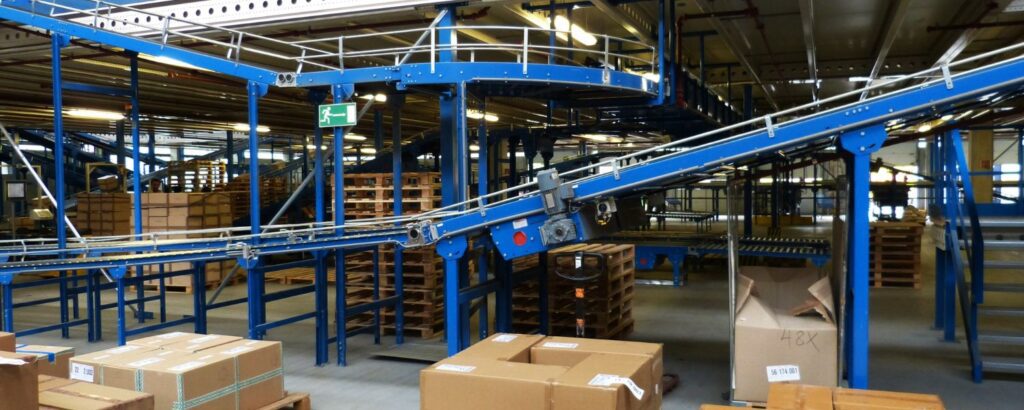In the fast-paced world of supply chain management, staying ahead of the competition and meeting customer demands is crucial. To achieve this, companies are increasingly turning to logistics analytics. This powerful tool provides valuable insights into the complexities of logistics and supply chains, helping businesses streamline operations, reduce costs, and enhance overall efficiency. In this guide, we’ll explore how logistics is transforming supply chain management, the benefits it offers, and how tools like Databrain are making a difference.
What is Logistics Analytics?

Logistics analytics refers to the use of data analysis and statistical techniques to improve logistics and supply chain management. It involves collecting and examining data related to various aspects of logistics, such as transportation, warehousing, inventory management, and distribution. The goal is to gain insights that help businesses optimize their operations and make informed decisions.
Logistics analytics software is a crucial component in this process. It allows companies to process large volumes of data quickly and accurately. By analyzing data from different sources, businesses can identify patterns, trends, and anomalies that impact their supply chain performance. This information can then be used to enhance decision-making and improve overall efficiency.
Benefits of Logistics Analytics

The integration of logistics analytics into supply chain management offers several significant benefits:
1. Enhanced Efficiency
By analyzing data from various logistics operations, businesses can identify inefficiencies and areas for improvement. This can lead to streamlined processes, reduced operational costs, and faster delivery times.
2. Cost Reduction
Logistics analytics helps companies pinpoint where they can cut costs without compromising quality. For example, it can identify the most cost-effective routes for green transportation or suggest optimal inventory levels to minimize holding costs.
3. Improved Customer Service
With real-time insights into logistics operations, companies can provide better customer service. They can track shipments more accurately, predict delivery times, and respond quickly to any issues that arise.
4. Better Decision-Making
Logistics analytics provides actionable insights that support data-driven decision-making. This reduces the reliance on guesswork and intuition, leading to more strategic and effective decisions.
5. Increased Visibility
Real-time data offers visibility into every stage of the supply chain. This transparency helps businesses monitor performance, identify potential disruptions, and address issues promptly.
Types of Logistics Analytics

Logistics analytics can be categorized into several types, each focusing on different aspects of supply chain management:
1. Descriptive Analytics
This type of analytics focuses on analyzing historical data to understand past performance. It involves looking at metrics such as delivery times, inventory levels, and transportation costs to identify trends and patterns.
2. Predictive Analytics
Predictive logistics analytics uses historical data and statistical models to forecast future outcomes. For instance, it can predict demand patterns, potential supply chain disruptions, and future sustainable transportation needs.
3. Prescriptive Analytics
Prescriptive logistics analytics goes a step further by recommending actions based on predictive insights. It suggests the best course of action to optimize logistics processes and address potential issues.
4. Diagnostic Analytics
This type of analytics focuses on understanding the root causes of problems. If a shipment is delayed or an inventory level is off, diagnostic logistics analytics helps determine the underlying reasons and offers solutions to prevent recurrence.
5. Real-Time Analytics
Real-time data provides up-to-the-minute information about logistics operations. It allows businesses to monitor shipments, track inventory, and manage resources in real-time, enabling immediate responses to any issues.
Actionable Insights from Logistics Analytics

The true value of logistics analytics lies in the actionable insights it provides. Here are some examples of how businesses can leverage these insights:
1. Optimizing Routes
Transportation and logistics can identify the most efficient routes for delivery, reducing fuel costs and transit times. By analyzing traffic patterns, weather conditions, and historical data, companies can optimize their transportation strategies.
2. Inventory Management
Supply chain logistics analytics helps businesses maintain optimal inventory levels. By analyzing sales data, demand forecasts, and supplier performance, companies can avoid overstocking or stockouts.
3. Supplier Performance
Logistics analytics tools can evaluate supplier performance by tracking metrics such as on-time delivery rates and quality of goods. This information helps businesses select the best suppliers and negotiate better terms.
4. Cost Analysis
Logistics analytics solutions provide insights into cost drivers within the supply chain. Companies can analyze cost data related to transportation, warehousing, and inventory management to identify areas for cost reduction.
5. Risk Management
By using transportation, businesses can identify potential risks and disruptions in their supply chain. This includes factors such as geopolitical issues, natural disasters, and supply shortages. Companies can then develop strategies to mitigate these risks.
How Databrain Helps to Implement Logistics Analytics

Databrain is a leading provider of logistics analytics software that helps businesses implement and leverage logistics effectively. Here’s how Databrain contributes to the revolution in sustainability in business supply chain management:
1. Advanced Analytics Capabilities
Databrain offers advanced analytics tools that enable businesses to analyze large volumes of data quickly and accurately. This includes capabilities for real-time data, predictive modeling, and descriptive analysis.
2. Integration with Existing Systems
Databrain’s software integrates seamlessly with existing supply chain management systems. This ensures that businesses can leverage their existing data while benefiting from advanced analytics features.
3. User-Friendly Interface
The software is designed with a user-friendly interface, making it accessible to users with varying levels of technical expertise. This ease of use helps businesses quickly adopt and utilize analytics tools.
4. Customizable Solutions
Databrain provides customizable logistics solutions tailored to the specific needs of each business. This flexibility ensures that companies can address their unique challenges and achieve their logistics goals.
5. Actionable Insights
Databrain’s software delivers actionable insights that help businesses make informed decisions. From optimizing routes to managing inventory, the platform provides valuable information to enhance supply chain operations.
6. Scalability
As businesses grow, Databrain’s solutions scale to meet evolving needs. This scalability ensures that companies can continue to leverage logistics analytics as they expand their operations.
Conclusion
The integration of logistics analytics into supply chain management is transforming the way businesses operate. By providing valuable insights into various aspects of logistics, this technology helps companies enhance efficiency, reduce costs, and improve customer service. The use of logistics analytics software and logistics analytics tools enables businesses to make data-driven decisions and address challenges effectively.
Databrain plays a crucial role in this transformation by offering advanced analytics capabilities and customizable solutions. With its help, businesses can harness the power of real-time transportation to optimize their supply chain operations.
As supply chains become more complex and competitive, leveraging logistics solutions will be key to staying ahead. Embracing these tools and techniques will empower businesses to navigate the challenges of modern logistics and achieve greater success in their supply chain management.
Vectorglobe enhances logistics by offering a suite of advanced tools and solutions designed to optimize supply chain management. The platform provides real-time data integration, predictive analytics, and actionable insights into transportation and warehousing operations. By leveraging Vectorglobe’s logistics analytics tools, businesses can efficiently monitor performance, identify inefficiencies, and make data-driven decisions.
The software’s user-friendly interface and customizable features allow companies to tailor analytics to their specific needs, improving operational efficiency, reducing costs, and enhancing overall supply chain performance. This comprehensive approach helps businesses navigate complex logistics challenges effectively.

